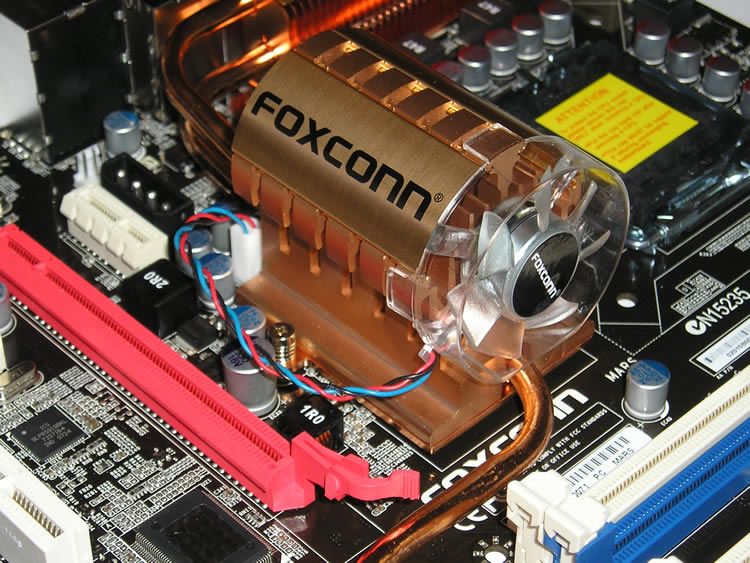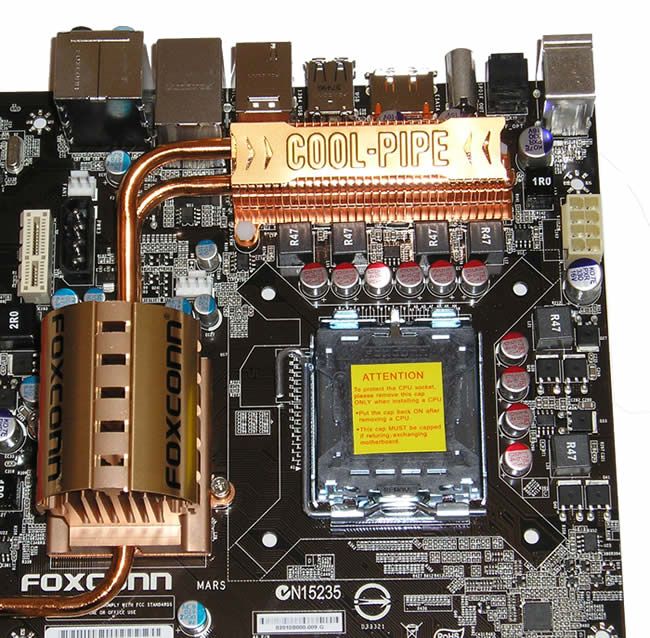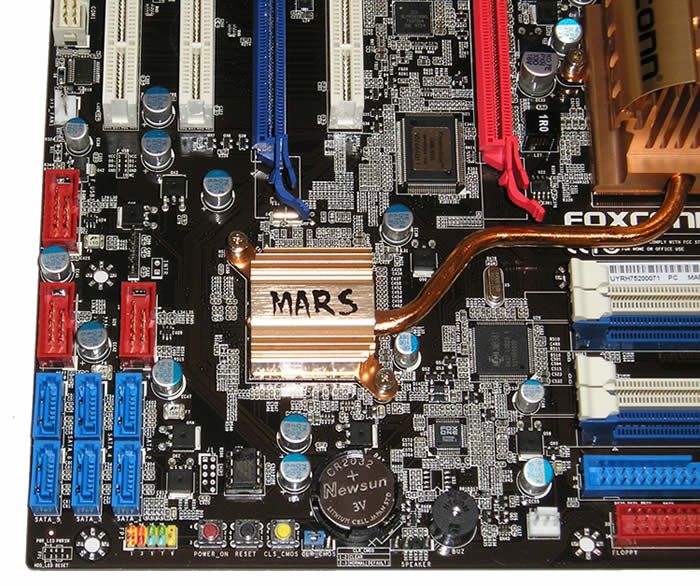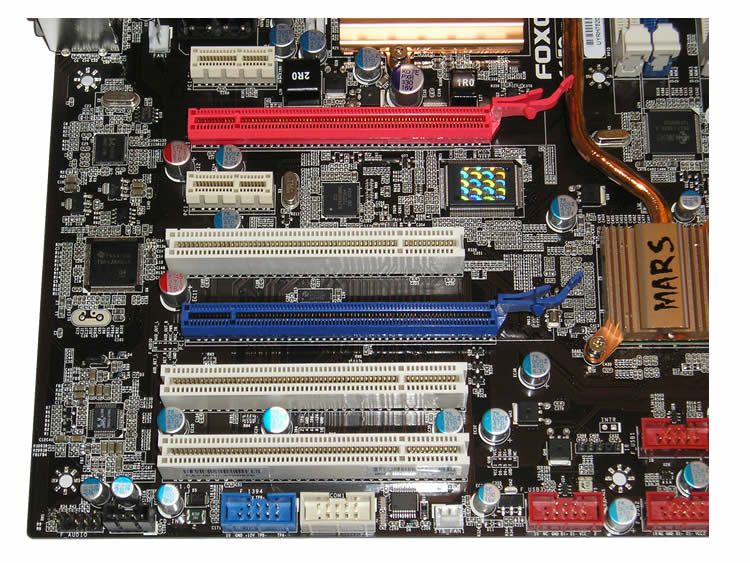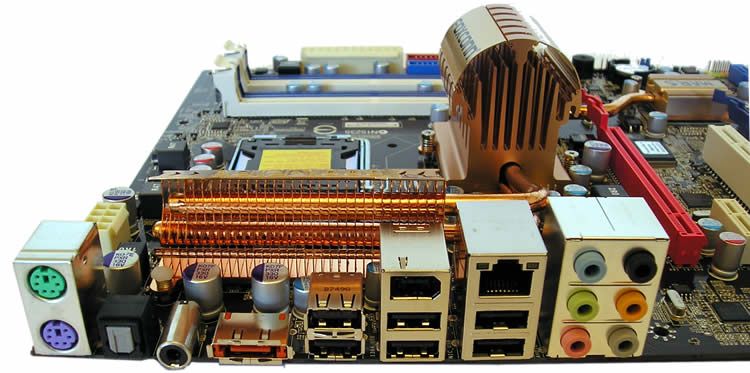Test: Foxconn MARS - UK
Bundkort, Intel d. 19. maj. 2008, skrevet af Polarfar 0 Kommentarer. Vist: 6083 gange.
Billed behandling:
Oversættelse:
Pristjek på http://www.pricerunner.dk
Produkt udlånt af: Foxconn
DK distributør: Frode Herløv
Layout
As I mentioned, the first-hand impression of Mars is one of a very neat motherboard. A black PCB and toned down colors on the components. Fortunately Foxconn have not taken after DFI on this subject.
The first thing one notices is the pipeshaped northbridge heatsink with Foxconn logo. It is the centerpiece in a heatpipe coolingsystem, just like almost any other high-end solutions on the market, that connect southbridge, northbridge and Mosfets. Only deviation from the norm is that Mars has room for a 40mm fan-unit on the large heatsink. The fan fits well into the design, and it is a fine addition if you want to tweak your systemspeed.
It looks more elegant than ie. the radial fan ASUS attach to their MosFet heatsink, but I can think of better looking overall solutions.
If we look at the area around the cpu socket we find, besides the large heatsinks, a detail that had me puzzled. Judging from the number of chokes ( the black blocks ) the cpu powersupply would be six-phased, and I have seen other sites making that claim. A "finger-on test" does not reveal any hot transistors in the un-heatsinked area. I therefore conclude that this is a four-phase design. The best high-end boards often have eight channels to deliver the amperes, in order to spread the load.
The southbridge also has its own heatsink with a nice Mars logo. We find 6 SATA ports and a selection of USB and Firewire connectors.
On the edge of the board right next to the battery, we find three onboard buttons for Power on/off, Reset and CCMOS. These are nice to have if you do a test setup on the table with no enclosure. No blingbling here either - no lit buttons or any other pimp stuff. We can also find the floppy and ATA ports that run through a separate controller chip together with the eSATA port.
There are two x16 PCIe sockets on the board both meant for graphics cards. Mars can handle two ATi gpu's in a Crossfire setup, but as with all other P35 boards we do not have 2x16 lanes available on the PCIe bus, so the second card will only have x4 bandwidth.
The placement of the sockets make good sense. Even with two large dual-slot graphicscards mounted, you will still have access to two PCI sockets and one PCIe x1.
The IO panel is nicely packet with a variety of plugs.
Not that many new things to the design. All in all this looks pretty much like all the other P35 high-end models, but let us see what happens once we get this baby fired up.
Anmeld
Information


